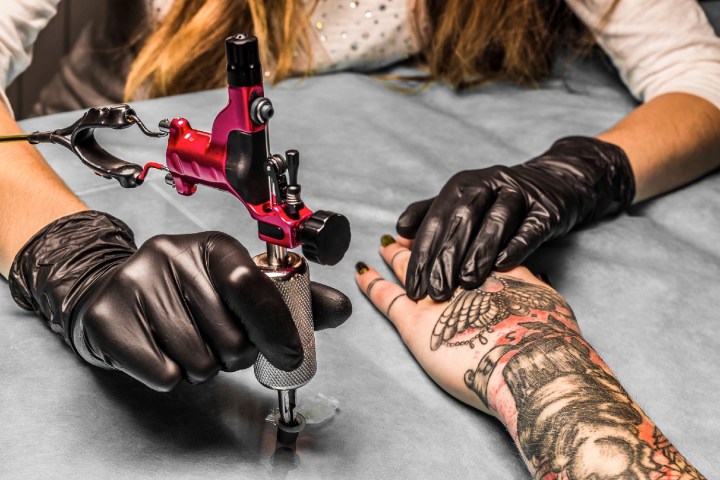
Created by a team of researchers led by Deji Akinwande and Nanshu Lu at the University of Texas at Austin, the graphene-based tattoos can be laminated onto skin using water, much like a temporary tattoo. Unlike regular tattoos, however, the test tattoos the team has developed are transparent — with the “sweet” part of the equation coming from their potential applications, rather than their looks.
“Unlike ordinary temporary tattoos, the graphene tattoos can function as sensors for various vital signs such as the electrical signals from the body, skin temperature, and hydration,” Akinwande, a professor in the department of electrical and computer engineering, told Digital Trends. “These signals reflect the health, state, and activity of a person. It is a very exciting development because this is the first invisible and imperceptible tattoo sensors and does not require any adhesive to secure them to the skin. This means the user cannot feel them and, hence, they are extremely comfortable and can be placed on any part of the skin including the face. Additionally, they are very easy to remove with a tape.”

The tattoos are made of graphene, coated with an ultrathin backing layer made of transparent polymer material. During fabrication, this combined graphene and transparent polymer layer is transferred onto a sheet of regular tattoo paper and then carved into different patterns to form different types of sensor. In tests, the graphene electronic tattoos were shown to be capable of accurately measuring skin temperature and hydration, while they can also function as electrocardiogram (ECG), electromyogram (EMG), and electroencephalogram (EEG) readers for measuring the electrical activity of the heart, muscles, and brain.
Now isn’t that a more useful tattoo than the couple of emo song lyrics you thought were totally profound back in college?
“We are rapidly developing this graphene tattoo technology,” Akinwande said. “Shideh kabiri, the lead postdoctoral scholar [on the project], has already made significant advancements — especially for human machine interfaces and control using live signals from the graphene tattoos. We will be reporting this advancement in near future. Also, plans for commercialization are in progress.”
A paper describing this research was recently published in the journal ACS Nano.


